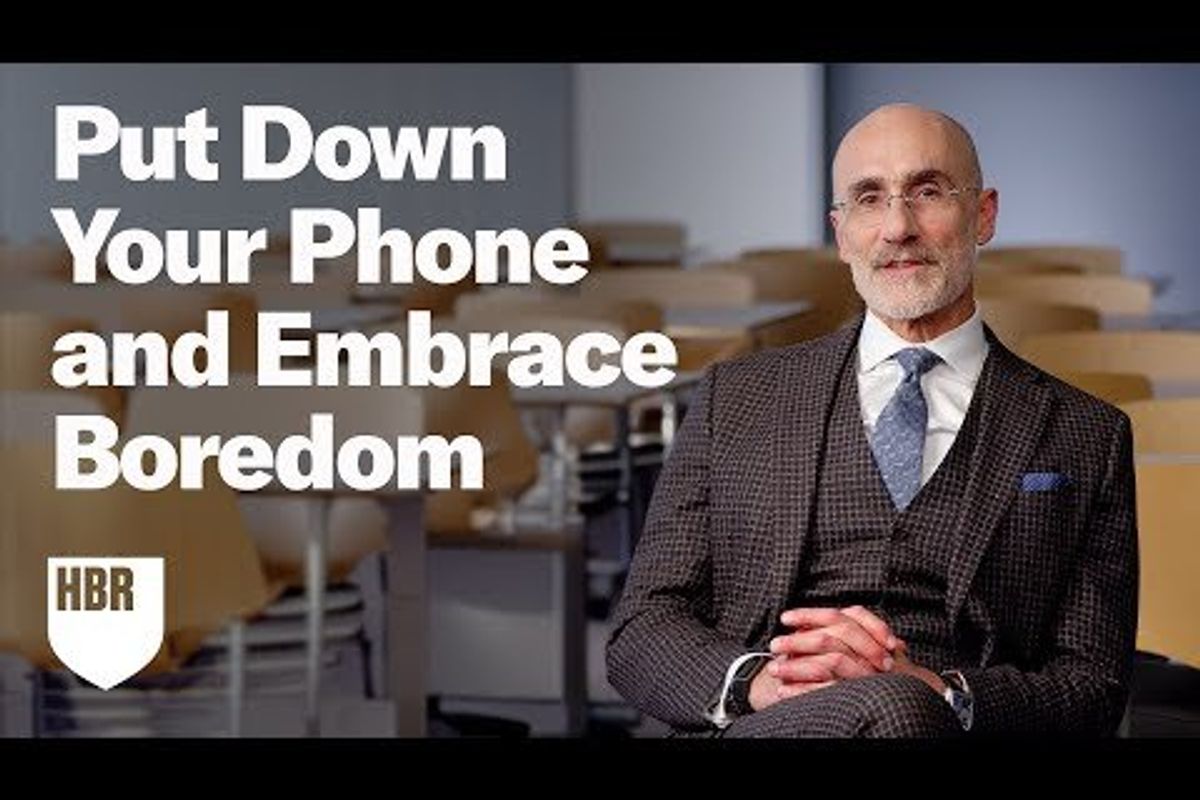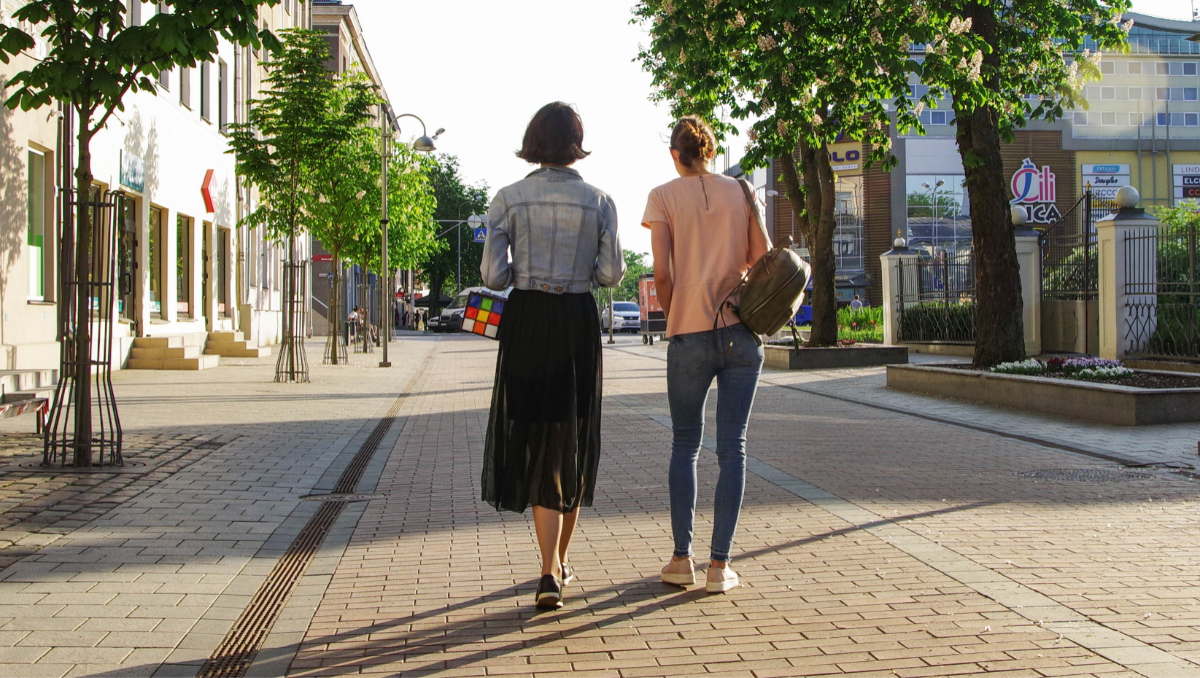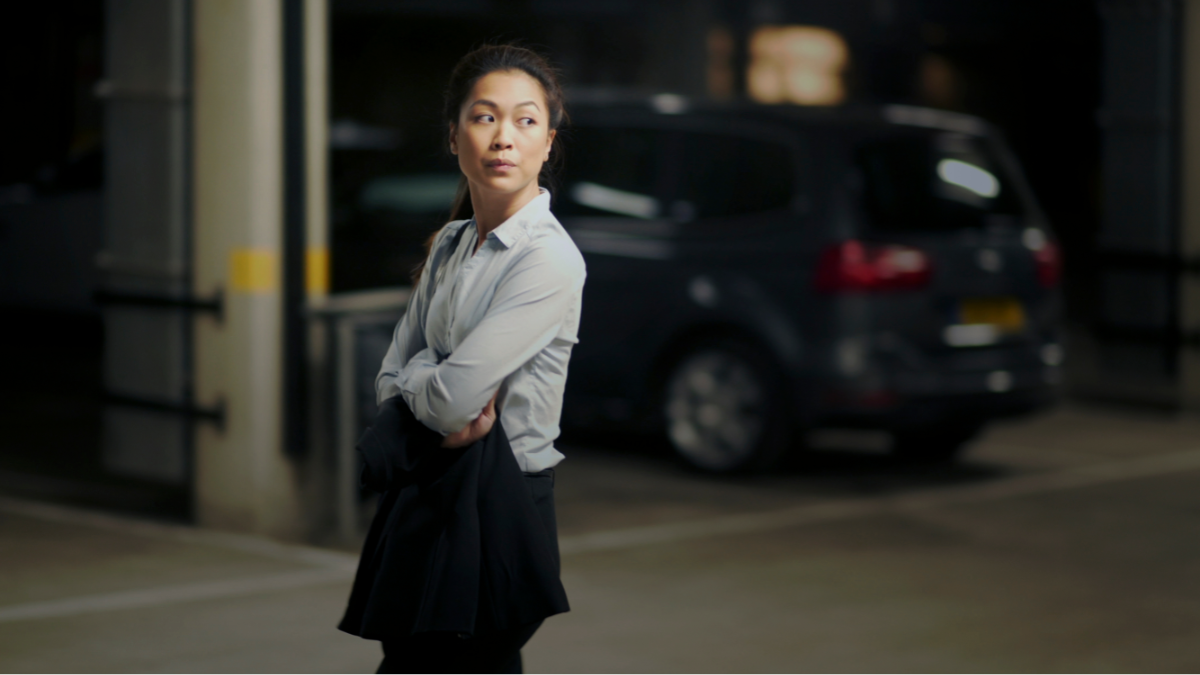Harvard happiness researcher explains why being bored is 'essential' for our mental health
We have a powerful neurological network that's only triggered by boredom.

Boredom is good for us, but smartphones make it too easy to avoid it.
It's no secret that spending too much time on our screens isn't good, but most of us have a hard time not overusing them anyway. Our lives have become so intertwined with technology that we use our phones for everything—communication with friends and family, paying bills, following the news, finding recipes, tracking habits, entertainment, and more. Excessive phone use is associated with all kinds of mental and emotional health problems in youth and young adults, and we're seeing more and more older adults impacted by phone addiction as well.
But hey, at least we're never bored, right? That's true—unfortunately. As Harvard psychologist and happiness researcher Arthur C. Brooks shares, our phones, which keep us from being bored, might actually be the crux of the problem.
"You need to be bored. You will have less meaning and you will be more depressed if you never are bored," Brooks says bluntly. "I mean, it couldn't be clearer."
- YouTube www.youtube.com
"Let me give you the good side of boredom in general," he continues. "Boredom is a tendency for us to not be occupied otherwise cognitively, which switches over our thinking system to use a part of our brain that's called the default mode network. That sounds fancy. It's really not. The default mode network is a bunch of structures in your brain that switch on when you don't have anything else to think about. So you forgot your phone and you're sitting at a light, for example. That's when your default mode network goes on."
The problem is, we don't like it, Brooks says. One of his colleagues at Harvard did an experiment where participants had to sit in an room and do absolutely nothing for 15 minutes. The only thing they could do was push a button that would deliver a painful electric shock to themselves. So the choices were to sit there being bored or shock themselves, and surprisingly, a large majority chose self-inflicted shocks over sitting with their own thoughts for 15 minutes.
"We don't like boredom," says Brooks. "Boredom is terrible."

But why? What's so bad about letting the mind wander? Brooks says it comes down to having to ponder life's big questions.
"The default mode network makes us think about things that might be kind of uncomfortable," he says. "When you think about nothing, your mind wanders and thinks about, for example, big questions of meaning in your life. What does my life mean? You go to uncomfortable existential questions when you're bored."
"That turns out to be incredibly important, incredibly good," Brooks continues. "One of the reasons we have such an explosion of depression and anxiety in our society today is because people actually don't know the meaning of their lives. Much less so in previous generations. Tons of data show this, and furthermore, we're not even looking."
The reason we're not looking? Because we don't have to. We have a device that keeps us from ever having to be bored, and we reach for it instantly without even consciously thinking about it most of the time.

"You're actually trying to not be bored because the default mode network is mildly uncomfortable, because it sends you to the types of questions that you can't get your mind around, you can't get your arms around," Brooks says. "Well, that's a big problem. That's a doom loop of meaning. If every time you're slightly bored you pull out your phone, it's going to get harder and harder for you to find meaning. And that's the recipe for depression and anxiety and a sense of hollowness, which, by the way, are all through the roof."
So how do we get out of this "doom loop of meaning?" Brooks suggests consciously leaving our phone behind more often and forcing ourselves to "be bored more."
"Tomorrow, when you go to the gym in the morning after you wake up, don't take your phone," he says. "Can you handle it? Not listening to a podcast while you're working out, just being in your head. I promise you, you'll have your most interesting ideas while you're working out without devices. It's probably been a long time since you've done that. Commute with nothing, not even the radio. Can you do that? Start getting better at periods that are 15 minutes and longer of boredom, and watch your life change."

Brooks refers to boredom as a skill, and he says the better you get at boredom the less bored you will be with ordinary things—your job, your relationships, and things going on around you.
"But more importantly, you'll start digging into the biggest questions in your life: purpose, meaning, coherence, significance," he says. "And who knows? You might just get happier."
Brooks shares the three protocols he uses to curb phone addiction:
- Don't sleep with your phone. (He has a no device policy after 7 p.m. and doesn't sleep with his phone.)
- No phones during meals. ("We're there for each other," he says. "We're not there for people who aren't there.")
- Regular social media fasts. (He has device and social media cleanses where he avoids them for longer lengths of time.)
Brooks says his brain screams at him at first when he takes breaks, which is the addiction talking. But then it calms down and he ends up feeling a lot better by the end of his break. "These protocols are really, really helpful and I recommend them to anybody and everybody," he says.
Most of us are aware of how addictive our phones can be, but we may struggle to moderate our own usage. Giving ourselves clear boundaries around when, where, and how we use our devices, as well as knowing that the discomfort of boredom is actually good for us, may help us all lead a healthier, more balanced life.
You can find more from Dr. Brooks, including his books and research on happiness, here.





 Women walking down a street.Image via Canva Photos.
Women walking down a street.Image via Canva Photos.  Woman aware of her surroundings in a parking garage. Image via Canva Photos.
Woman aware of her surroundings in a parking garage. Image via Canva Photos.

 Mom ties kid's shoe.
Mom ties kid's shoe. Girl helping tie shoelaces on the trail.
Girl helping tie shoelaces on the trail.